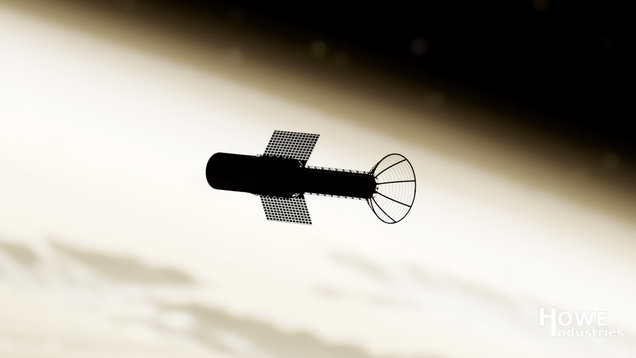Tech News
NASA's Proposed Plasma Rocket Would Get Us to Mars in 2 Months
The future of space travel depends on our ability to reach celestial pit stops faster and more efficiently. As such, NASA is working with a technology development company on a new propulsion system that could drop off humans on Mars in a relatively speedy two months’ time rather than the current nine month journey required to reach the Red Planet.
NASA’s Innovative Advanced Concepts (NIAC) program recently selected six promising projects for additional funding and development, allowing them to graduate to the second stage of development. The new “science fiction-like concepts,” as described by John Nelson, NIAC program executive at NASA, include a lunar railway system and fluid-based telescopes, as well as a pulsed plasma rocket.
The potentially groundbreaking propulsion system is being developed by Arizona-based Howe Industries. To reach high velocities within a shorter period of time, the pulsed plasma rocket would use nuclear fission—the release of energy from atoms splitting apart—to generate packets of plasma for thrust.
It would essentially produce a controlled jet of plasma to help propel the rocket through space. Using the new propulsion system, and in terms of thrust, the rocket could potentially generate up to 22,481 pounds of force (100,000 Newtons) with a specific impulse (Isp) of 5,000 seconds, for remarkably high fuel efficiency.
PPR Final Render w music
It’s not an entirely new concept. NASA began developing its own version back in 2018 under the name Pulsed Fission-Fusion (PuFF). PuFF relied on a device commonly used to compress laboratory plasmas to high pressures for very short timescales, called z-Pinch, to produce thrust. The pulsed plasma rocket, however, is smaller, simpler, and more affordable, according to NASA.
The space agency claims that the propulsion system’s high efficiency could allow for crewed missions to Mars to be completed within two months. As it stands today with commonly used propulsion systems, a trip to Mars takes around nine months. The less time humans can spend traveling through space, the better. Shorter periods of exposure to space radiation and microgravity could help mitigate its effects on the human body.
The pulsed plasma rocket would also be capable of carrying much heavier spacecraft, which can be then equipped with shielding against galactic cosmic rays for the crew on board.
Phase 2 of NIAC is focused on assessing the neutronics of the system (how the motion of the spacecraft interacts with the plasma), designing the spacecraft, power system, and necessary subsystems, analyzing the magnetic nozzle capabilities, and determining trajectories and benefits of the pulsed plasma rocket, according to NASA.
The new propulsion system has the potential to revolutionize crewed spaceflight, helping humans make it to Mars without the toil of the trip itself.
For more spaceflight in your life, follow us on X and bookmark Gizmodo’s dedicated Spaceflight page.
When you subscribe to the blog, we will send you an e-mail when there are new updates on the site so you wouldn't miss them.



Comments